Posted by: Ken @ 10:33 pm
 The flag is waving! Flocks of up to 50 rosy-finches are now visiting the feeders at the Crest House Restaurant and Gift Shop in the Sandia Mountains just east of Albuquerque, New Mexico. All three species are present, including both the Coastal and Interior races of the Gray-crowned Rosy-Finch.
The flag is waving! Flocks of up to 50 rosy-finches are now visiting the feeders at the Crest House Restaurant and Gift Shop in the Sandia Mountains just east of Albuquerque, New Mexico. All three species are present, including both the Coastal and Interior races of the Gray-crowned Rosy-Finch.
Steller’s Jay at the Sandia Crest House deck feeder (Click to see its white “eyebrows,” characteristic of the Jays of the southern Rockies. In the NW USA, this species has blue streaks on its forehead.:
I’m a firm believer in the value of attaining my RDA, BirdChaser’s
As winter approaches, even exceeding my bird RDA does not seem enough to restore my balance with nature. Now into the second third of my eighth decade of life, I am aware that a peculiar affliction has taken its hold on me. My condition was diagnosed almost 10 years ago, not by a medical doctor, but by Hart Schwarz, a respected US Forest Service biologist. For this ailment, there is temporary relief, but no cure. “Finchophilia,” he proclaimed in a note to the birding community
This past week Mary Lou and I had a delightful visit with our five Texas Panhandle grandchildren and their parents. We hiked Buffalo Lake NWR in Canyon and saw the Mountain Bluebirds (as depicted in a previous post)
My eyes weren’t sharp enough to see the yellow, but I did capture this nice image of a Pine Siskin (click on the photo for more views that show the yellow):
The next morning, we drove 4 1/2 hours west on I-40 into New Mexico, arriving at the Cedar Crest exit at about 11 AM. Since we moved away from The Land Of Enchantment in 2004, some changes were evident. Aside from the proliferation of strip malls along NM-14, we saw that Pinyon Pines had been seriously decimated by the double attack of drought, borers and disease (See: Bark Beetles, Three-toes and Fire
The rosy-finch feeders at Sandia Crest House were our objective. We arrived there at 11:30, and within 5 minutes a flock of about 50 Rosies descended for lunch. All three species were present. Black Rosy-Finches predominated, and I identified only one Brown-capped Rosy-Finch. We saw only one Interior (Hepburn’s) race among the 5-8 Gray-crowned species in the flock.
We enjoyed green chile cheeseburgers and the company of about a dozen birders who visited during the two days we spent there. I got so taken up with interpreting the rosy-finch species to visitors that I took very few photographs! I thought I missed a shot of the Brown-capped species, but the lone bird turned up in two of my photos.
All three species of rosy-finch swarmed like bees at the lower feeder. If you click on and then select the largest size, you will see the Brown-capped bird on the right side of the feeder. Note its bright pink undersides and lack of white on hindcrown:
This Black Rosy-Finch, at the deck feeder, was in excellent plumage. Note the yellow bill– it will turn black with the approach of breeding season: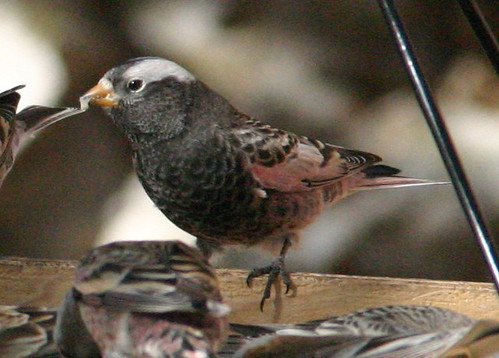
Here, on the left, a Coastal (Hepburn’s or gray-cheeked) and an Interior race Gray-crowned Rosy-Finch feed on the surface of the Crest House deck with two Black Rosies:
Hepburn’s race of Gray-crowned Rosy-Finch (Leucosticte tephrocotis littoralis) has become more common on Sandia Crest the past two years:
A Red-breasted Nuthatch provided some comic relief as we waited for the rosy-finches to return (Click on photo for more views):
Like the nuthatches, the Mountain Chickadees would grab a seed and fly off (Click on photo to see crown pattern):
At lower elevations along the road to Sandia Crest, we encountered three races of the Dark-eyed Junco. Gray-headed Juncos predominated in the spruce forest:
There were many Pink-sided Dark-eyed Juncos at the Cienega Canyon Picnic Area, but my best capture was this one, at the Rio Grande Nature Center State Park in Albuquerque:
I only obtained one photo of the Oregon race of Dark-eyed Junco: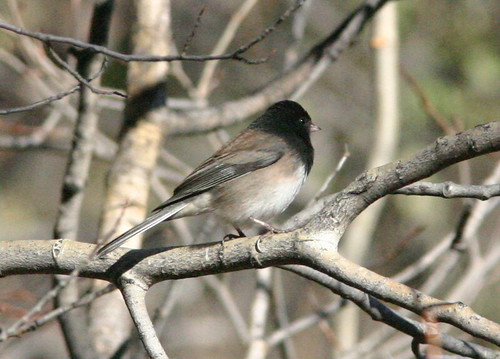
We encountered several Townsend’s Solitaires between 7000 and 8000 feet elevation. This one was quite cooperative as it foraged on the ground (Click for additional views):
Mammals seen in the Sandia Mountains included this rabbit-eared and skunk-tailed Abert’s Squirrel (Click for additional view)…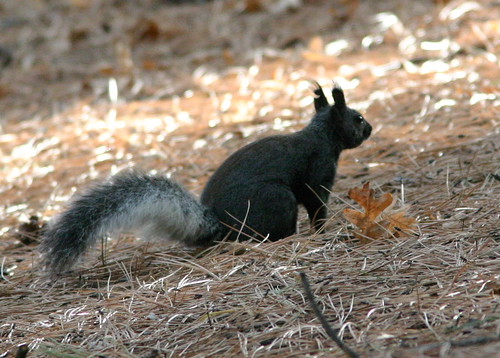
…a Chipmunk…
UPCOMING FIELD TRIPSCentral NM Audubon, Sunday, January 25:
Meet at the south side of Dion’s in the Four Hills parking lot (south of Central and west of Tramway) at 5:15 AM to search for pygmy, saw-whet, and other owls. You can also meet the group later at 7:30 AM at Doc Long picnic ground. From there we’ll work our way up the mountain looking for winter finches, and other forest birds. We will end up at the Crest House where we’ll watch the Rosy-Finch banders and sip hot chocolate. Contact Raymond by e-mail Thursday Birders, January 29: Sandia Crest to look for the Rosy- Weekend Bird Walks at the Rio Grande Nature Center:
|













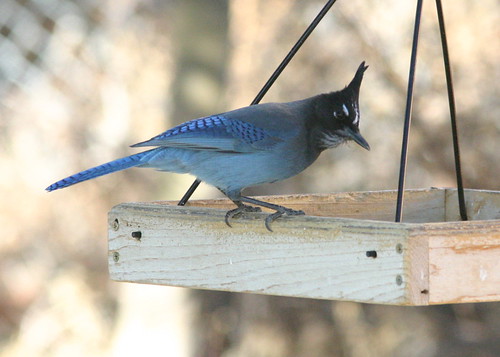

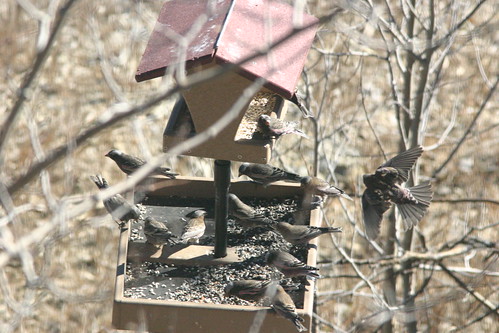
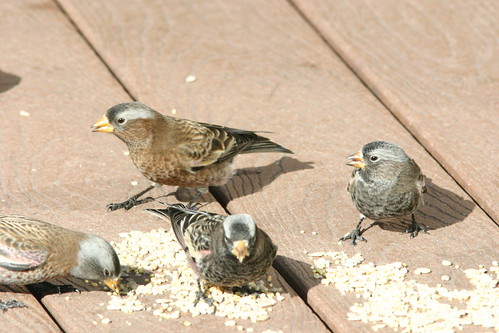
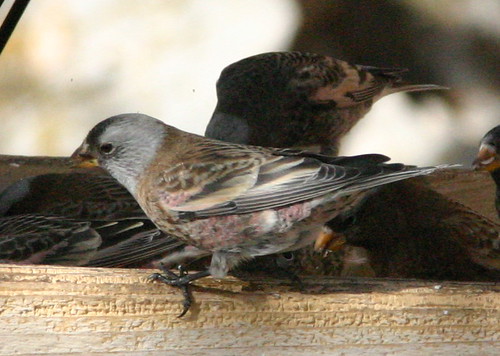
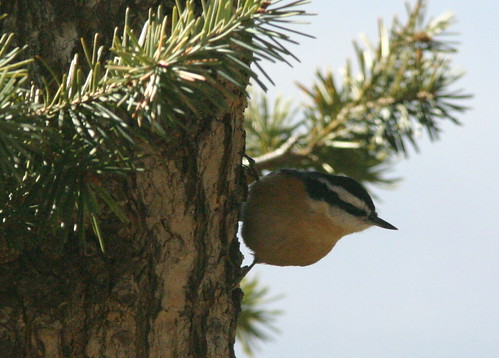




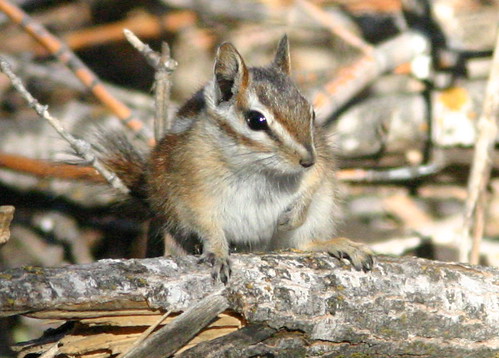

November 19th, 2008 at 9:37 am I just wanted to comment on your beautiful photos. I live in New York State - don’t believe I’ve ever seen a Rosy Finch here!(or a “Rock” squirrel). You have a wonderful blog!
December 5th, 2008 at 7:38 am The rosy-finches will always be special birds to my wife and I as we spent our honyemoon in New Mexico and stayed at a lodge on the mountain. We had to wait over an hour for the rosy-finches to arrive but it was well worth the wait. We also saw a cougar on the way up the mountain stalking mule deer across the road! It was an unforgettable trip and we can’t wait to return in the future to celebrate an anniversary. Enjoy your blog and pictures, all the best, Andy.